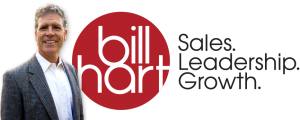 As a business owner or VP of Sales, have you been frustrated with your CRM utilization or forecast accuracy? You are not alone. Let's talk about one reason you may not be getting the results you wanted.
As a business owner or VP of Sales, have you been frustrated with your CRM utilization or forecast accuracy? You are not alone. Let's talk about one reason you may not be getting the results you wanted.
Unfortunately, many companies are investing large amounts of money and time into buying and customizing CRMs without seeing an adequate return on their investment. The problem is not with how these organizations are setting up their CRM. The real issue is a fundamental flaw in their sales process.
Many companies use a system in which a sales rep's forecast begins when an opportunity is discovered and is immediately assigned a percentage of chance to close.
As the rep completes another step in the sales cycle, he or she generally increases the chance to close by 10-15%, if his CRM doesn't do this automatically.
The flaw in this system is that the way deals progress through the pipeline is based on the seller's sales process rather than the buyer's buying process. Therefore, any forecast is arbitrary and unrealistic since it is made without knowledge of the buyer (buyers - there could be several in the process), what he/she is thinking, and where they are in the buying proces . This reflects a sales approach that is all about the seller's need to make a sale instead of helping his prospects.
Forecasting should be based on the buyer's activity, not the seller's.
Sales reps forecast opportunities long before they should. The simple truth they don't like to face is that there is no potential deal until a buyer has told them they have a solution that could work!What determines whether there is a strong percentage of winning the deal is:
- how much information the seller has regarding the buyer's buying process,
- the buyer's criteria for a decision,
- who the decision makers are,
- what their risk factors are, and
- how well the seller is aligned with the buyer(s).
Without this information, any rep who forecasts an opportunity, especially early on, maybe selling on hope and a wish. And if he does win the deal, he may not know the true reason he won it. (From my observations, the best reps wait until they know the majority of the details of the buying process before they enter a forecast.)
Sales managers may also need to change their thinking about forecasting. For many sales managers, having many deals in the pipeline, with varying percentages, averages out to look like a strong forecast. This makes the sales manager look like he is doing his job and takes some of the heat off. But to the business owner, CFO, or VP of Sales, using averages to create a forecast is very frustrating and unreliable.
How to design your pipeline
The sales funnel stages in a CRM should be tied to specific buyer stages and information the rep has obtained; specifically, the goal, problem or need, the value that goal represents to the customer, their decision criteria, and the people involved in the decision. Once these points have been verified, the rep can forecast with greater confidence.
Here is my recommendation for how a CRM sales funnel should work:
1. New prospect
2. Opportunity identified - need, goal or problem identified
3. Needs analysis - identify desired outcomes, criteria
4. ROI analysis - solution > cost
5. Other decision makers identified
6. Identify decision criteria and risks, define success? Evidence need to see?
7. Value proposition/trial proposal
8. Proposal delivered
9. Evaluation phase - identify activities to add value and reduce risk
10. Review of solution - address risk issues
11. Price negotiation
12. Deal closed and won
13. Deal closed and lost
A CRM should have fields that list each of these data points. Further, each of these steps needs to have other fields tied to it so the sales process has an audit trail. When you ask a rep what he/she did to add value, that activity should be listed in the CRM and tied to the specific stage of the deal. Fields that are not filled out should be a warning sign to you.
There are serious benefits to having such an auditable sales process. It enables your sales reps to self-diagnose their areas of weakness in an account, or in their skill level. It further enables you to identify the areas in which a particular sales rep needs coaching or skill development so you can develop an action plan to improve the chance of winning a deal or improving the sales rep's overall performance. Understanding where each person is in the buying process will help a rep know what the next step is for each person and make for a much more accurate and realistic forecast.
Need more help with your CRM or forecasting?
I have several processes and resources I'll be happy to share that can make a significant difference. For a free, 60-minute consultation, contact me today!

